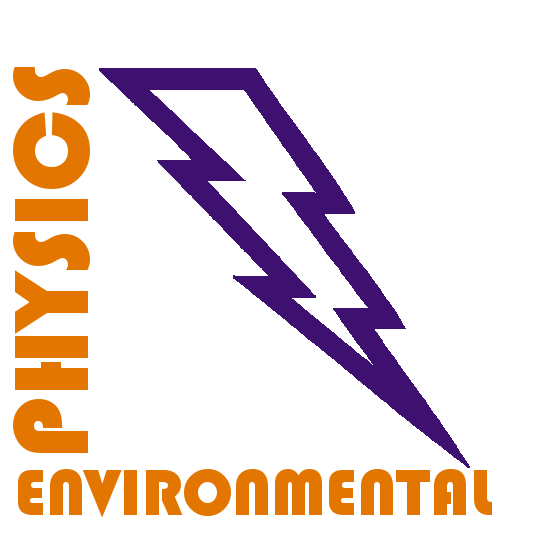Citations: | 1.) | Sheydaei, M., Moharramkhani, P., Ayoubi-Feiz, B., Khodabandeloo, F., 2025. Experimental and computational investigation of cold atmospheric plasma/visible-light/N-TiO2 in treatment of synthetic and real wastewaters. Water Resources and Industry 33. https://doi.org/10.1016/j.wri.2024.100276
(2025)
------------- | | 2.) | Milardovich, N.J., Santamaría, B., Fina, B.L., Chamorro, J.C., Fischfeld, G., Prevosto, L., 2025. Experimental and Numerical Characterization of a Falling Film Plasma Reactor for the Degradation of Organic Pollutants in Water. Plasma Chemistry and Plasma Processing. https://doi.org/10.1007/s11090-025-10540-9
(2025)
------------- | | 3.) | Robinson, C., Stapelmann, K., 2024. Plasma treating water for nitrate based nitrogen fertilizer - A review of recent device designs. Current Opinion in Green and Sustainable Chemistry 50. https://doi.org/10.1016/j.cogsc.2024.100978
(2025)
------------- | | 4.) | Hussain, K., King, R.S.P., Allan, R.N., Farrugia, K., Krzeminska-Ahmadzai, U., 2025. The use of non-thermal plasma for DNA decontamination in a forensic vacuum metal deposition chamber: A proof of concept study. Forensic Science International 370, 112453. https://doi.org/10.1016/j.forsciint.2025.112453
(2025)
------------- | | 5.) | Shakiba, M., Faraji, M., Jouybar, S., Foroozandeh, A., Bigham, A., Abdouss, M., Saidi, M., Vatanpour, V., Varma, R.S., 2025. Advanced nanofibers for water treatment: Unveiling the potential of electrospun polyacrylonitrile membranes. Environmental Research 276, 121403. https://doi.org/10.1016/j.envres.2025.121403
(2025)
------------- | | 6.) | Babalola, S.O., Olawale Daramola, M.O., Iwarere, S.A., 2025. Insights into the degradation of carbamazepine using a continuous-flow non-thermal plasma: kinetics and comparison with UV-based systems. Environmental Science: Water Research and Technology 11, 1568–1581. https://doi.org/10.1039/d4ew01042f
(2025)
------------- | | 7.) | Ben Ameur, W., Chouchene, B., Schneider, R., Hajjaji, A., Zouaoui, M., 2025. Biosynthesis of MgAl2O4 nanoparticles and their use as photocatalyst for sunlight-driven degradation of Amido-Black. Solid State Communications 404. https://doi.org/10.1016/j.ssc.2025.116044
(2025)
------------- | | 8.) | Cheng, S., Zhou, Q., Peng, T., Liu, F., 2025. Progress in the application of the plasma technology to harmlessness and recycling utilization of urban solid waste. Chinese Journal of Ecology 44, 1741–1752. https://doi.org/10.13292/j.1000-4890.202505.035
(2025)
------------- | | 9.) | Gonçalves, J., Pequeno, J., Díaz Villalobos, I., Kržišnik, D., Zigon, J., Koritnik, T., 2025. Killing Two Crises with One Spark: Cold Plasma for Antimicrobial Resistance Mitigation and Wastewater Reuse. Water (Switzerland) 17. https://doi.org/10.3390/w17081218
(2025)
------------- | | 10.) | Inanoǧlu, S., Specca, D., Tepper, B.J., Simon, J.E., Karwe, M.V., 2025. Cold Plasma Treatment of Sweet Basil Seeds and Nutrient Water in Hydroponics: Impact on Growth and Quality. Journal of Food Science 90. https://doi.org/10.1111/1750-3841.70224
(2025)
------------- | | 11.) | Kumar, A., Saini, V.K., Huaccallo-Aguilar, Y., Reinecke, S.F., Hampel, U., 2025. Characterization of reactive species in water induced by cold atmospheric air plasma: Experimental applications for industrial micropollutant removal from wastewater and seed germination. Journal of Environmental Chemical Engineering 13. https://doi.org/10.1016/j.jece.2025.117263
(2025)
------------- | | 12.) | Md. Mokter Hossain et al. Investigating iron removal from wastewater and simultaneous iron oxide catalyst synthesis by dielectric barrier discharge, Journal of Water Process Engineering, Volume 65, 2024, 105893, https://doi.org/10.1016/j.jwpe.2024.105893.
(2024)
------------- | | 13.) | Núñez, J., Maril, M., Pizarro-Castillo, L., Lara, C., Yeber, M., Carrasco, C., 2024. Electrocoagulation of landfill leachate: Transforming a hazardous residue into a source of irrigation water. Journal of Environmental Management 370, 122856. https://doi.org/10.1016/j.jenvman.2024.122856
(2024)
------------- | | 14.) | Stere, C.E., Delarmelina, M., Dlamini, M.W., Chansai, S., Davies, P.R., Hutchings, G.J., Catlow, C.R.A., Hardacre, C., 2024. Removal and Oxidation of Low Concentration tert -Butanol from Potable Water using Nonthermal Plasma Coupled with Metal Oxide Adsorption. ACS EST Eng. 4, 2121–2134. https://doi.org/10.1021/acsestengg.4c00166
(2024)
------------- | | 15.) | Ahlawat, K., Jangra, R., Prakash, R., 2024. Environmentally Friendly UV-C Excimer Light Source with Advanced Oxidation Process for Rapid Mineralization of Azo Dye in Wastewater. ACS Omega 9, 15615–15632. https://doi.org/10.1021/acsomega.4c00516
(2024)
------------- | | 16.) | Xu, Y., Bassi, A., 2024. Non‐thermal plasma decontamination of microbes: a state of the art. Biotechnology Progress e3511. https://doi.org/10.1002/btpr.3511
(2024)
------------- | | 17.) | Ulucan‐Altuntas, K., Foglia, S., Saleem, M., Tomei, G., Ceriani, E., Carmagnani, M., Marotta, E., Paradisi, C., 2024. Application of Response Surface Methodology for the Optimization of Operating Conditions of a Self‐Pulsing Discharge (SPD) Plasma Reactor for the Degradation of Perfluorooctanoic Acid (PFOA) in Water. Plasma Processes & Polymers e2400155. https://doi.org/10.1002/ppap.202400155
(2024)
------------- | | 18.) | Wang, Z., Niu, J., 2024. Study on physicochemical properties of corn starch modified by dielectric barrier discharge (DBD) plasma. J. Phys.: Conf. Ser. 2808, 012032. https://doi.org/10.1088/1742-6596/2808/1/012032
(2024)
------------- | | 19.) | Jangra R., Ahlawat K., Prakash R. 2023 An SDBD plasma-based source for efficient degradation of VOCs in an enclosed environment; Physics Letters, Section A: General, Atomic and Solid State Physics, 490, art. no. 129184; DOI: 10.1016/j.physleta.2023.129184
(2023)
------------- | | 20.) | Lin S.-L., Zhang H., Chen W.-H., Song M., Kwon E.E. 2023 Low-temperature biochar production from torrefaction for wastewater treatment: A review; Bioresource Technology, 387, art. no. 129588; DOI: 10.1016/j.biortech.2023.129588
(2023)
------------- |
|

